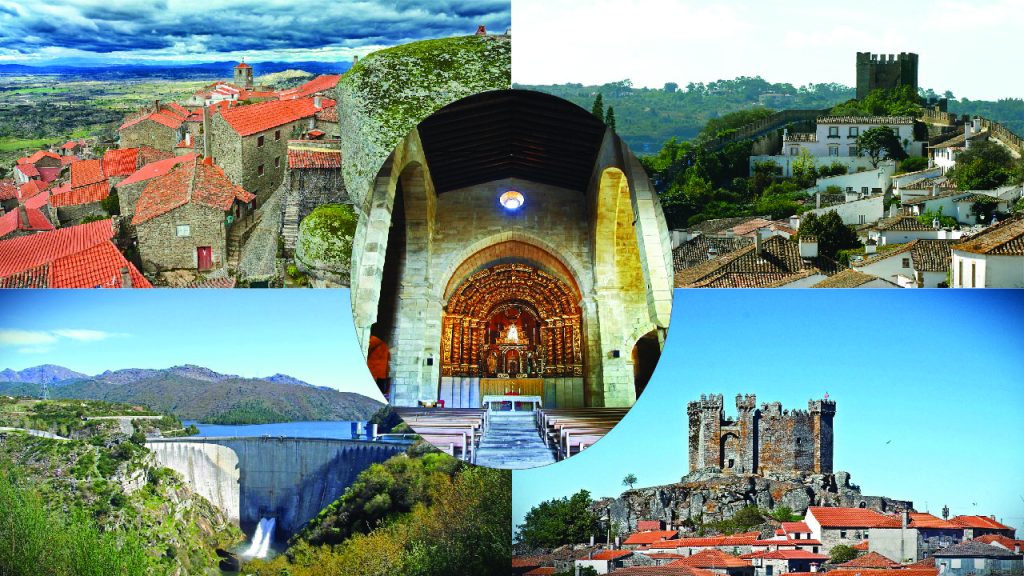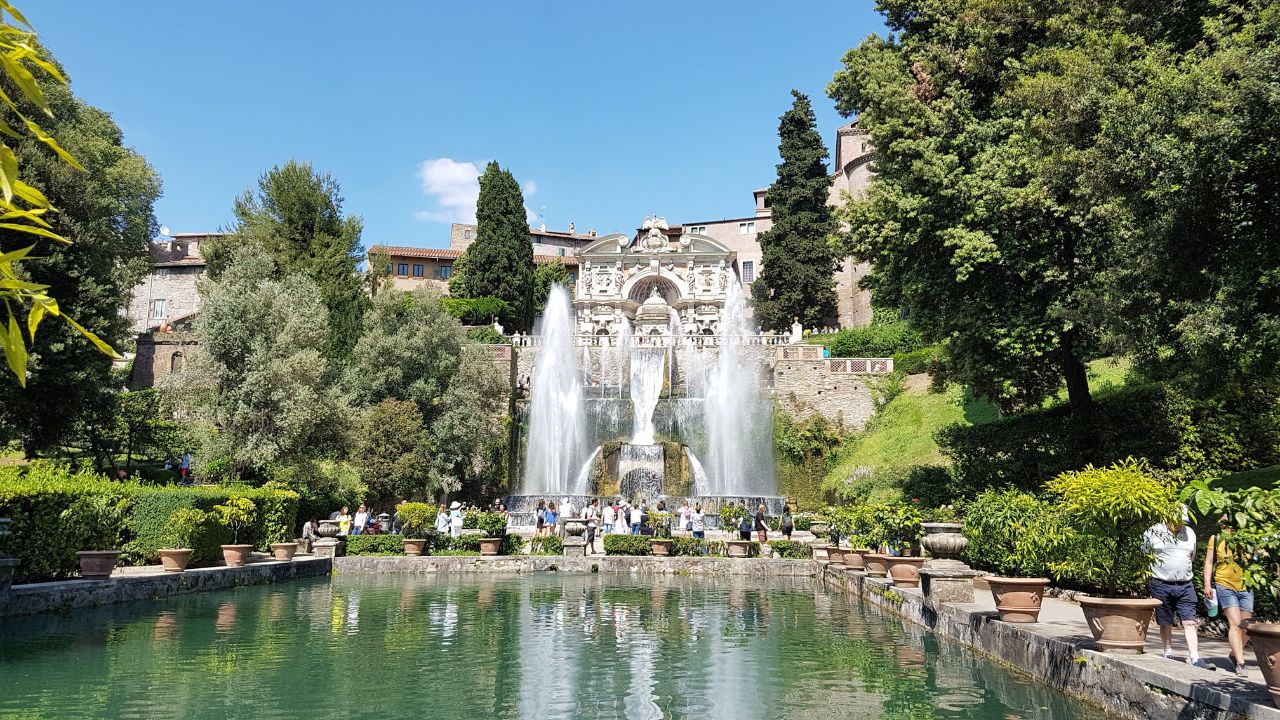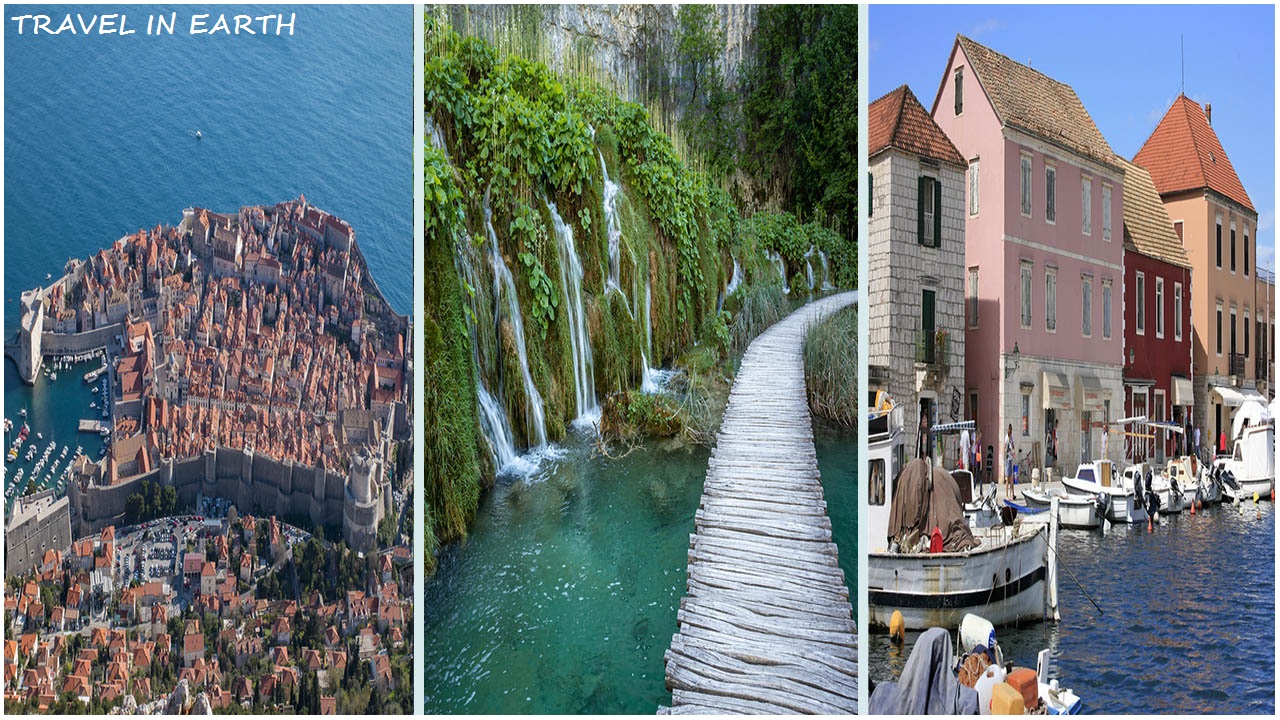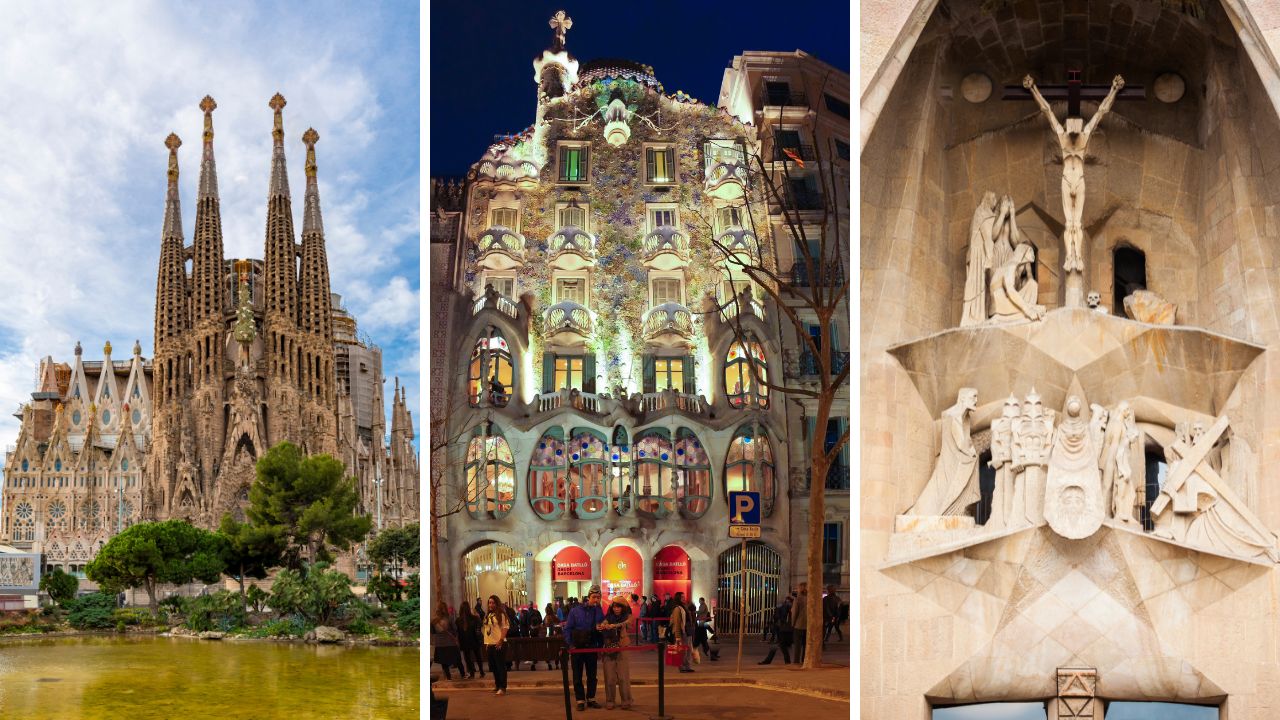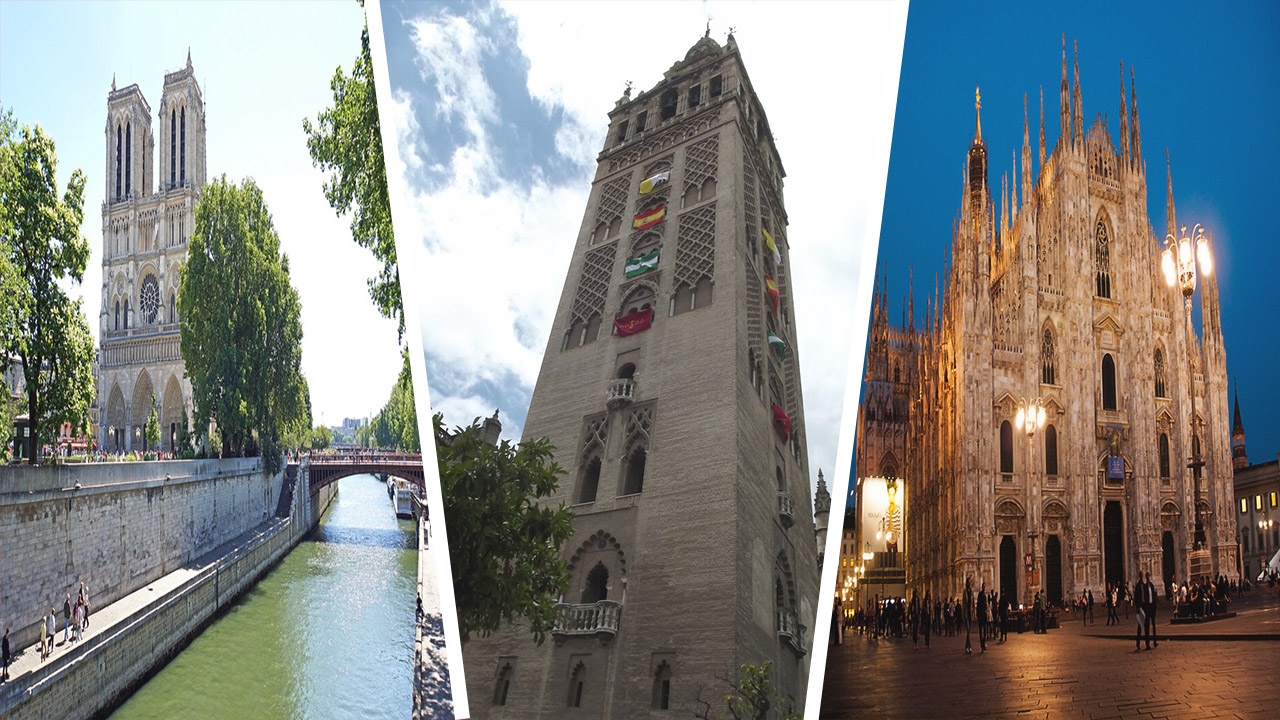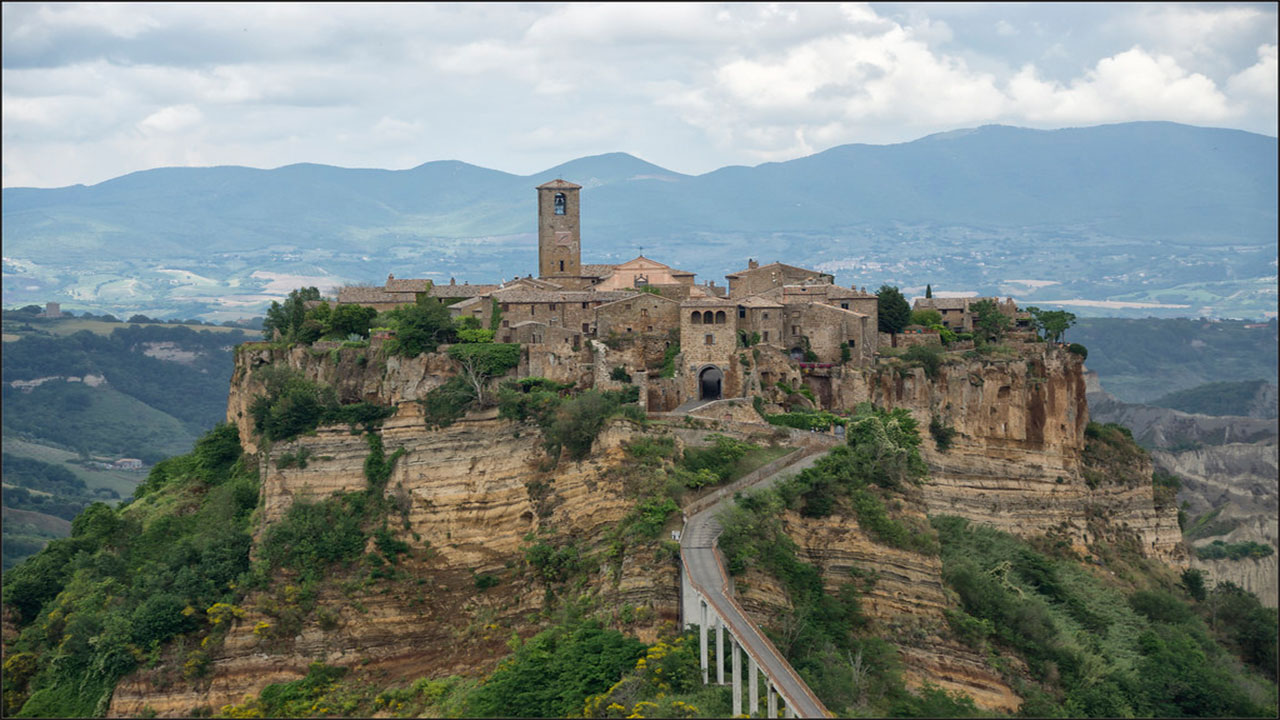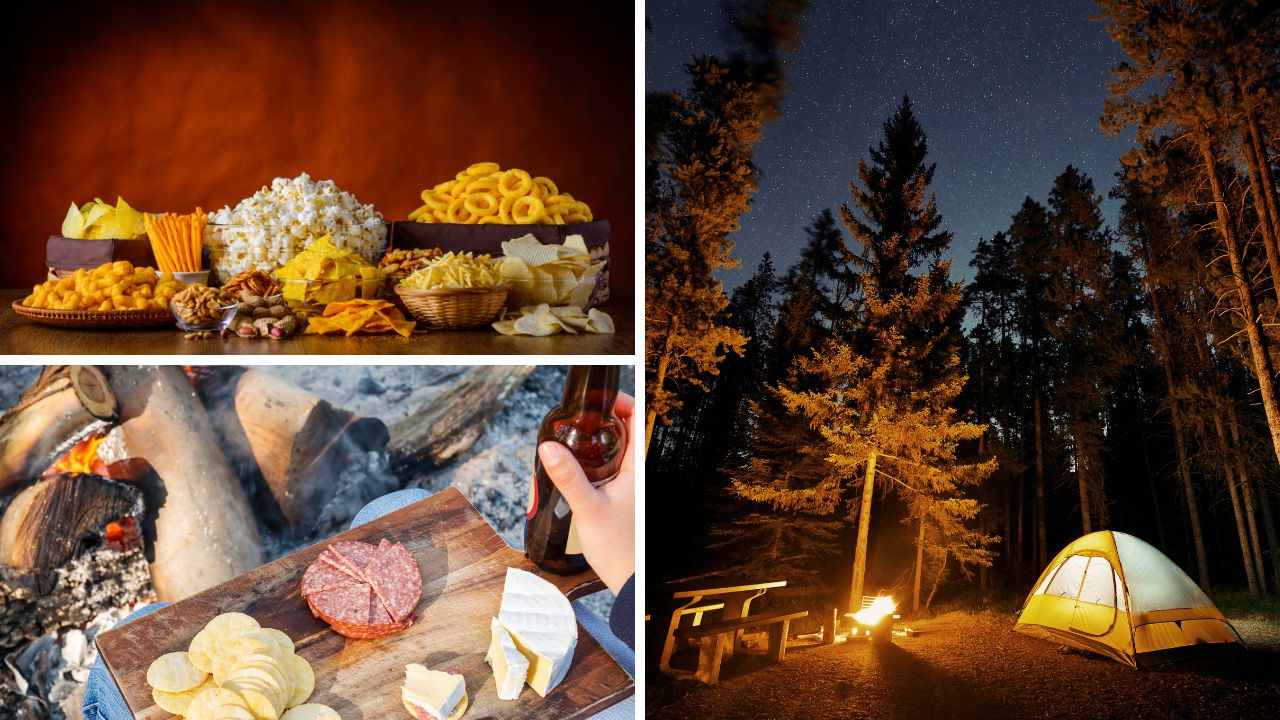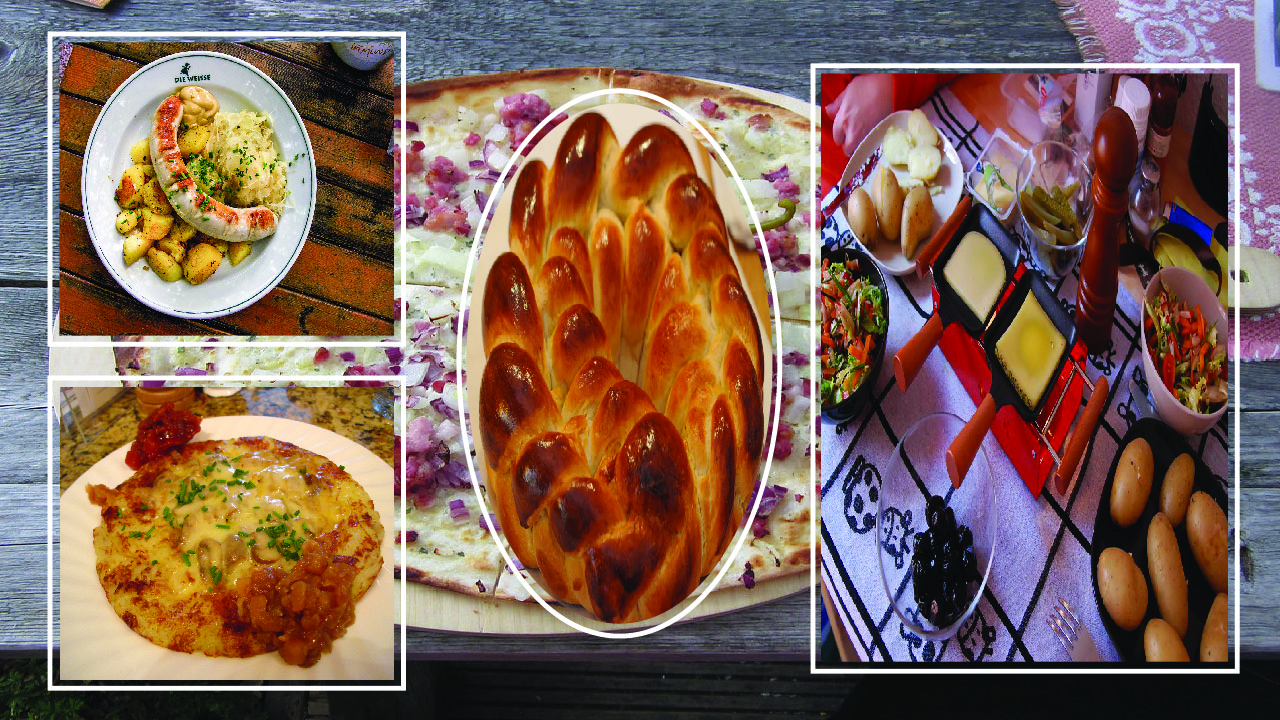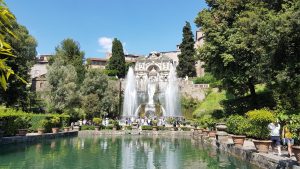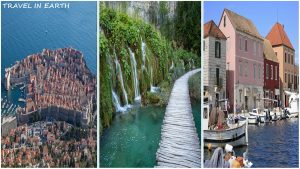Portugal, a country steeped in history and blessed with stunning landscapes, is home to some of Europe’s most charming villages. From the sun-drenched hills of the Algarve to the lush green valleys of the north, these small settlements offer a glimpse into the heart and soul of Portuguese culture. This article will guide you through 15 Most Beautiful Villages in Portugal, each with its own charm.
Portugal’s Geography and Cultural Heritage
Portugal’s diverse geography plays a significant role in shaping its villages. The country spans from the rugged Atlantic coast to the mountainous interior, creating a variety of landscapes that influence local architecture and traditions. The distinctive features of Portugal’s villages reflect its rich cultural heritage, which has been shaped by centuries of history, including Roman, Moorish, and Christian influences.
1. Monsanto
Located in the eastern region of Portugal, people often refer to Monsanto as “the most Portuguese village in Portugal.” This title is well-deserved, as Monsanto offers a unique glimpse into the country’s past.
Location and Landscape
Monsanto sits atop a steep hill in the Castelo Branco district, near the Spanish border. Giant boulders appear to hang between houses in the village’s unique landscape.
Historical Significance
Dating back to prehistoric times, Monsanto has seen the rule of Romans, Visigoths, and Moors. King Afonso Henriques conquered the village in 1165, and it has since become a symbol of Portuguese resilience.
Unique Architecture
Monsanto’s architecture is the most striking feature. Monsanto builds houses between, under, and sometimes even inside massive granite boulders. Some boulders serve as roofs, walls, or foundations, creating a harmonious blend of human habitation and natural landscape.
Cultural Attractions
- Monsanto Castle: Perched at the village’s highest point, offering panoramic views.
- Capela de São Miguel: A small chapel with beautiful frescoes.
- Lucano Tower: A medieval clock tower in the village center.
Local Traditions
Known for its “Festa das Cruzes” (Festival of the Crosses) in May, Monsanto celebrates successful resistance against a siege by throwing flower-covered clay pots from the castle walls.
2. Óbidos
Óbidos, often referred to as the “Wedding Present Town,” is a small fortified village in the Oeste region of Portugal.
Location and Landscape
Located about 80 kilometers north of Lisbon, Óbidos sits atop a hill, surrounded by a fortified wall. The village overlooks a picturesque windmill-dotted countryside.
Historical Significance
Óbidos has a rich history dating back to the Roman occupation of the Iberian Peninsula. In 1148, the Moors liberated it, and it subsequently became a part of the House of the Queens, a customary gift from kings to their wives.
Unique Architecture
The village is characterized by its well-preserved medieval architecture.
- Castle walls: On top of the walls, visitors can walk the entire village perimeter.
- Whitewashed houses: many adorned with vibrant flowers and colorful trim.
- Narrow cobblestone streets: barely wide enough for a car to pass.
Cultural Attractions
- Óbidos Castle: Now a luxury hotel, it offers a glimpse into medieval royal life.
- The main church, the Igreja de Santa Maria, is the site of King Afonso V’s royal wedding.
- Porta da Vila: The main town gate, decorated with traditional blue and white tiles (azulejos).
Local Traditions
Óbidos is famous for its chocolate festival, “Óbidos Chocolate Festival,” held annually in March or April. The town is also known for its traditional cherry liqueur, Ginja de Óbidos, often served in small chocolate cups.
3. Piódão
Piódão, often called the “Nativity Scene Village,” is a small mountain village in central Portugal.
Location and Landscape
Piódo, nestled in the Serra do Açor mountains in the district of Coimbra, is known for its stunning location among steep hills and dense forests.
Historical Significance
The village’s isolated location made it a haven for outlaws and Jews fleeing persecution during the Inquisition. This remoteness has helped preserve its unique character over the centuries.
Unique Architecture
Piódão is famous for its schist houses with slate roofs, creating a uniform appearance that gives the village its “Nativity Scene” nickname:
- The steep hillside is home to tiers of houses.
- Narrow, winding streets connect the different levels of the village.
- Blue-painted doors and windows contrast beautifully with the gray stone.
Cultural Attractions
- Igreja Matriz de Piódão: The village’s whitewashed church stands out among the schist houses.
- Praia Fluvial de Piódão: A river beach where visitors can cool off in the summer.
- Museu da Aldeia: A small museum showcasing local history and traditions.
Local Traditions
Piódão is known for its handicrafts, particularly items made from linen and wool. The village also celebrates several religious festivals throughout the year, with the Feast of Our Lady of Conception in August being one of the most important.
These first three villages offer a taste of the diverse beauty and rich cultural heritage found in Portugal’s small settlements. Each has its own unique charm, from Monsanto’s boulder-strewn landscape to Óbidos’ medieval walls and Piódão’s schist architecture. As we continue our journey through Portugal’s most beautiful villages, we’ll discover even more hidden gems that showcase the country’s incredible diversity and timeless appeal.
4. Aldeia da Mata Pequena
Aldeia da Mata Pequena is a tiny village that offers visitors a glimpse into traditional Portuguese rural life.
Location and Landscape
Located in the Mafra municipality, about 40 kilometers northwest of Lisbon, Aldeia da Mata Pequena is situated in a lush, green valley.
Historical Significance
Careful restoration has preserved the village’s traditional character, dating back to the 18th century. It serves as a living museum of rural Portuguese life.
Unique Architecture
The village consists of only 13 traditional houses:
- Local stone forms the buildings, which have thatched roofs.
- Each house is named after its original function (e.g., “Baker’s House,” “Weaver’s House”).
- The village layout reflects the communal nature of rural life.
Cultural Attractions
- The communal oven house, Casa do Forno, served as the location for baking bread.
- The ethnographic museum displays tools and objects used in daily rural life.
- Surrounding hiking trails provide beautiful views of the countryside.
Local Traditions
Visitors can participate in traditional activities like bread-making, weaving, and herbal medicine workshops, providing an immersive experience of Portuguese rural traditions.
5. Marvão
Perched high on a granite crag, Marão is often called “the eagle’s nest” due to its commanding position.
Location and Landscape
Marvão is located in the Alentejo region, near the Spanish border. It sits atop an 843-meter-high hill, offering panoramic views of the surrounding countryside.
Historical Significance
The village has been an important strategic point since ancient times. The Moors fortified the village in the 9th century, and it played a crucial role in border disputes between Portugal and Spain.
Unique Architecture
Marvão’s architecture is a testament to its military past.
- Massive medieval walls encircle the village.
- Whitewashed houses line the narrow, winding streets.
- Gothic and Renaissance elements are visible in many buildings.
Cultural Attractions
- Marvão Castle: A well-preserved medieval fortress with stunning views.
- Igreja de Santa Maria: A 13th-century church with beautiful Manueline features.
- Museu Municipal de Marvão: Houses archaeological finds and local artifacts.
Local Traditions
Marvão hosts an annual chestnut festival in November, celebrating the region’s important chestnut harvest. The village is also known for its traditional Alentejo cuisine, including dishes like ensopado de borrego (lamb stew).
6. Sortelha
Sortelha is a small fortified village that seems frozen in time, offering visitors a medieval experience.
Location and Landscape
Located in the Guarda district of central Portugal, Sortelha sits on a rocky hill surrounded by a landscape of granite boulders and oak forests.
Historical Significance
The village dates back to the 13th century and served as a significant defensive outpost during the Middle Ages. It received its town charter in 1228 under King Sancho II.
Unique Architecture
Sortelha’s architecture is an ideal example of a medieval village.
- Well-preserved stone walls completely enclose the village.
- Granite houses blend seamlessly with the surrounding rocks.
- The main gate, Porta da Vila, features the coat of arms of King Dinis.
Cultural Attractions
- Sortelha Castle offers panoramic views of the surrounding countryside.
- The village’s autonomy is symbolized by a 16th-century pillory in the main square.
- Igreja Matriz: The main church, dedicated to Nossa Senhora das Neves.
Local Traditions
Sortelha is known for its handicrafts, particularly items made from linen and wool. The village hosts medieval fairs where visitors can experience life as it was in the Middle Ages, complete with period costumes, food, and activities.
7. Monsaraz
Monsaraz is a fortified village that offers a unique blend of Portuguese and Moorish influences.
Location and Landscape
Situated in the Alentejo region, Monsaraz overlooks the Alqueva Reservoir, the largest artificial lake in Western Europe. The village sits atop a steep hill, providing breathtaking views of the surrounding plains.
Historical Significance
People have lived in Monsaraz since prehistoric times. The Moors occupied Monsaraz until the Portuguese conquered it in 1167. During the Middle Ages, the village played a crucial role in border defense.
Unique Architecture
Monsaraz’s architecture reflects its rich history:
- Well-preserved medieval walls surround the village.
- Whitewashed houses line narrow, cobblestone streets.
- Many buildings feature Manueline (Portuguese Gothic) architectural elements.
Cultural Attractions
- Monsaraz Castle offers panoramic views of the Alqueva Reservoir and surrounding countryside.
- The main church, Igreja Matriz, dates back to the 16th century.
- The Fresco Museum houses important 16th-century frescoes discovered in the region.
Local Traditions
Monsaraz is renowned for its handwoven tapestries and blankets. The village also hosts a popular “Dark Sky” event, taking advantage of its location in one of the best stargazing regions in Europe.
8. Dornes
Dornes is a picturesque riverside village known for its tranquil beauty and unique pentagonal tower.
Location and Landscape
Located in central Portugal, Dornes sits on a small peninsula jutting into the Zêzere River. Lush green hills and crystal-clear waters surround the village.
Historical Significance
According to legend, the Knights Templar founded Dornes in the 12th century. On the site of a miraculously found statue of the Virgin Mary, the village built its iconic tower.
Unique Architecture
Dornes’ architecture is characterized by its simplicity and harmony with nature.
- The pentagonal Templar tower is the village’s most distinctive feature.
- Traditional houses with terracotta roofs line the narrow streets.
- The village layout follows the contours of the peninsula.
Cultural Attractions
- Torre Pentagonal: A unique five-sided tower that now houses a small museum.
- Igreja de Nossa Senhora do Pranto: A beautiful 16th-century church.
- Praia fluvial: A river beach perfect for swimming in the summer months.
Local Traditions
Dornes is known for its religious festivals, particularly the Festa de Nossa Senhora do Pranto in August. The village is also famous for its traditional boats, called “barcas,” used for fishing and river crossings.
These additional villages showcase the diversity of Portugal’s rural landscapes and cultural heritage. From the medieval charm of Sortelha to the riverside tranquility of Dornes, each village offers a unique glimpse into Portuguese history and tradition. As we continue our journey through Portugal’s most beautiful villages, we’ll discover even more hidden gems that make this country a treasure trove of picturesque settlements.
9. Sistelo
Often referred to as the “Little Portuguese Tibet,” Sistelo is known for its terraced landscapes and traditional rural lifestyle.
Location and Landscape
Sistelo is located in northern Portugal’s Viana do Castelo district, within the Peneda-Gerês National Park. The village is famous for its stunning terraced hillsides, reminiscent of Asian rice paddies.
Historical Significance
The village dates back to medieval times and has maintained its agricultural traditions for centuries. The terraced fields, known as “socalcos,” are a testament to the ingenuity of local farmers in adapting to the mountainous terrain.
Unique Architecture
Sistelo’s architecture is a blend of functionality and tradition.
- Stone houses with thatched or slate roofs dot the landscape.
- Granaries (espigueiros) on stone pillars are a distinctive feature.
- The terraced fields themselves are an architectural marvel.
Cultural Attractions
- Castelo do Sistelo: A 19th-century manor house built by a returning emigrant.
- Igreja Paroquial de Sistelo: A parish church with stunning views of the valley.
- The Ecovia do Vez is a picturesque walking and cycling path along the Vez River.
Local Traditions
Sistelo is known for its traditional farming practices and the production of local products like corn bread, smoked meats, and Vinho Verde wine.
10. Alte
Alte is a charming village in the Algarve region, known for its whitewashed houses and fresh water springs.
Location and Landscape
Almond and fig trees surround Alte, which is located in the Algarve’s hills and provides a contrast to the area’s well-known beaches.
Historical Significance
Evidence of Roman and Moorish occupation dates back to prehistoric times in the village. For millennia, it has been known for its fresh water springs, which have attracted settlers.
Unique Architecture
Alte’s architectural style is typical of the inland Algarve.
- There are whitewashed houses with distinctive chimneys and colorful trim.
- Narrow, cobblestone streets wind through the village.
- Traditional handicraft workshops integrated into residential areas.
Cultural Attractions
- Fonte Pequena and Fonte Grande are two main springs that form the heart of village life.
- The main church, Igreja Matriz de Alte, features beautiful 18th-century tiles.
- The Polo Museológico Cândido Guerreiro e Condes de Alte is a small museum dedicated to local history and culture.
Local Traditions
Alte is famous for its handicrafts, particularly basketry and pottery. The village hosts an annual festival in August, celebrating local culture with music, dance, and traditional foods.
11. Lindoso
Lindoso is a historic village known for its impressive castle and unique granaries.
Location and Landscape
Situated in the Lima Valley in northern Portugal, Lindoso is part of the Peneda-Gerês National Park. Mountains and forests surround the village.
Historical Significance
Lindoso played a crucial role in defending Portugal’s northern border. Its castle, built in the 13th century, was a key fortification against Spanish invasions.
Unique Architecture
The most striking features of Lindo’s architectural design are:
- The medieval castle boasts its pristine walls and keep.
- A large collection of espigueiros (granaries) on stilts is used to store and dry corn.
- Traditional stone houses with slate roofs.
Cultural Attractions
- Castelo de Lindoso: A 13th-century castle offering panoramic views of the area.
- Núcleo Museológico do Castelo de Lindoso: A museum showcasing local history and culture.
- The espigueiros: A unique ensemble of over 50 granite granaries.
Local Traditions
Lindoso is known for its traditional farming practices and production of smoked meats and cornbread. The village celebrates several religious festivals throughout the year.
12. Favaios
Favaios is a small village renowned for its Moscatel wine production and bakeries.
Location and Landscape
Favaios, situated in the Douro Valley, a UNESCO World Heritage site, boasts terraced vineyards and provides breathtaking views of the wine region.
Historical Significance
Favaios has been an important wine-producing center since the 18th century. It received its town charter in 1211 from King Afonso II.
Unique Architecture
Favaio’s architecture reflects its winemaking heritage:
- Traditional stone houses with wine cellars.
- The central square boasts an iconic fountain and pillory.
- Ancient wineries and bakeries integrated into the village structure.
Cultural Attractions
- Bread and Wine Museum: showcases the village’s two main products.
- The main church, Igreja Matriz de Favaios, has beautiful Baroque features.
- Adega Cooperativa de Favaios is a local wine cooperative that offers tours and tastings.
Local Traditions
Favaios is famous for its Moscatel wine and traditional bread called “four corners bread.” The village hosts an annual bread and wine festival in August.
13. Castelo Rodrigo
Castelo Rodrigo is a fortified hilltop village with a rich history and panoramic views.
Location and Landscape
Situated in the Guarda district near the Spanish border, Castelo Rodrigo sits atop a hill overlooking the surrounding plains.
Historical Significance
The village played a crucial role in defending Portugal’s eastern border. It was the site of several important battles and changed hands between Portugal and Spain multiple times.
Unique Architecture
Castelo Rodrigo’s architecture reflects its military past:
- Well-preserved medieval walls encircling the village.
- At the pinnacle, there are the ruins of a castle from the 13th century.
- Narrow streets lined with traditional stone houses.
Cultural Attractions
- Palácio Cristóvão de Moura: A 16th-century palace now housing a small museum.
- Igreja do Reclamador: A Romanesque church with Gothic and Manueline elements.
- Casa da Cisterna: A beautiful manor house converted into a boutique hotel.
Local Traditions
Castelo Rodrigo is known for its almond orchards and hosts an almond blossom festival in February. The village is also famous for its traditional sausages and cheeses.
14. Talasnal
Talasnal is a beautifully restored schist village in central Portugal.
Location and Landscape
Talasnal, nestled in the Serra da Lous mountain range, boasts lush forests and stunning mountain views.
Historical Significance
Rural exodus nearly led to Talasnal’s abandonment in the mid-20th century, but careful restoration in recent years has preserved its traditional character.
Unique Architecture
Talasnal’s architecture is characterized by its use of local schist stone.
- Houses built entirely of schist with slate roofs.
- There are narrow, winding paths between tightly clustered houses.
- Charming guest houses have transformed many buildings.
Cultural Attractions
- Casa da Eira: A community center showcasing local crafts and products.
- Hiking trails: Several paths lead from the village into the surrounding mountains.
- Praia fluvial: A nearby river beach for summer swimming.
Local Traditions
Talasnal celebrates several traditional festivals throughout the year, including the Festival de Nossa Senhora da Guia in August. The village is also known for its honey production and chestnut harvesting.
15. Cacela Velha
Cacela Velha is a small fishing village that offers a perfect blend of history and natural beauty.
Location and Landscape
Located in the eastern Algarve, Cacela Velha overlooks the Ria Formosa lagoon system and the Atlantic Ocean.
Historical Significance
People have lived in the village since prehistoric times, and it was a significant Roman and later Moorish settlement. It played a role in the Portuguese Age of Discoveries as a departure point for expeditions in the Portuguese Age of Discovery.
Unique Architecture
Cacela’s architecture reflects its long history:
- Whitewashed houses with traditional Algarvian chimneys.
- The 16th-century fortress overlooking the sea.
- A beautiful 18th-century church dominates the village skyline.
Cultural Attractions
- Fortaleza de Cacela: A 16th-century fortress with panoramic views.
- Igreja Matriz de Cacela Velha: An 18th-century church with beautiful azulejo tiles.
- Praia de Cacela Velha: A stunning, unspoiled beach accessible by boat.
Local Traditions
Cacela Velha is known for its seafood, particularly oysters from the Ria Formosa. The village hosts an annual seafood festival in August, celebrating its fishing heritage.
Conclusion
Portugal’s most beautiful villages offer a captivating journey through the country’s rich history, diverse landscapes, and enduring traditions. From the schist houses of Piódão to the whitewashed walls of Cacela Velha, each village tells a unique story of Portugal’s cultural heritage.
These 15 villages represent the best of rural Portugal, showcasing the country’s architectural diversity, from medieval fortifications to traditional farmhouses. They offer visitors a chance to step back in time, experience authentic Portuguese culture, and enjoy breathtaking natural beauty.
As you plan your journey through Portugal, consider venturing beyond the well-trodden urban centers to discover these hidden gems. In these villages, you’ll find not just picturesque scenes but also the heart and soul of Portugal—a country where history, nature, and tradition blend seamlessly to create unforgettable experiences.

